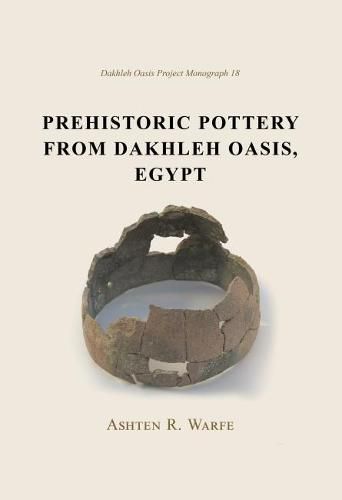Readings Newsletter
Become a Readings Member to make your shopping experience even easier.
Sign in or sign up for free!
You’re not far away from qualifying for FREE standard shipping within Australia
You’ve qualified for FREE standard shipping within Australia
The cart is loading…






As one of the few surviving artefacts from the late prehistory of north-east Africa, pottery serves as an essential material category by which to explore long-term human development. This book presents a major study on the ceramics recovered from early and mid-Holocene sites in Egypt’s Dakhleh Oasis, which come from 96 registered sites and five other findspots and comprise more than 10,000 sherds. In addition, there is little proxy evidence to support the manufacture of pottery in the form of kilns, clay firedogs, and other firing equipment. None of the ceramic objects come from burials. They derive instead from settlement sites that display evidence of living activities (hut circles, hearths, chipped stone scatters, etc.), or sites for which there is no other evidence of human activity. Through detailed description, classification and quantification, a detailed cultural sequence has been determined, demonstrating descrete stylistic variations between sites and over time, and highlighting growing diversity and innovation in local pottery-making from the late seventh to mid-third millennia cal. BC. These shifts help to refine the characterisation of local cultural units within the Holocene sequence for Dakhleh Oasis, and to compare against parallel pottery traditions elsewhere in the desert. A firmer grounding in the oasis ceramics, as detailed here, offers inroads to examine social practices and the interconnectedness of desert groups of the ancient Eastern Sahara.
$9.00 standard shipping within Australia
FREE standard shipping within Australia for orders over $100.00
Express & International shipping calculated at checkout
As one of the few surviving artefacts from the late prehistory of north-east Africa, pottery serves as an essential material category by which to explore long-term human development. This book presents a major study on the ceramics recovered from early and mid-Holocene sites in Egypt’s Dakhleh Oasis, which come from 96 registered sites and five other findspots and comprise more than 10,000 sherds. In addition, there is little proxy evidence to support the manufacture of pottery in the form of kilns, clay firedogs, and other firing equipment. None of the ceramic objects come from burials. They derive instead from settlement sites that display evidence of living activities (hut circles, hearths, chipped stone scatters, etc.), or sites for which there is no other evidence of human activity. Through detailed description, classification and quantification, a detailed cultural sequence has been determined, demonstrating descrete stylistic variations between sites and over time, and highlighting growing diversity and innovation in local pottery-making from the late seventh to mid-third millennia cal. BC. These shifts help to refine the characterisation of local cultural units within the Holocene sequence for Dakhleh Oasis, and to compare against parallel pottery traditions elsewhere in the desert. A firmer grounding in the oasis ceramics, as detailed here, offers inroads to examine social practices and the interconnectedness of desert groups of the ancient Eastern Sahara.